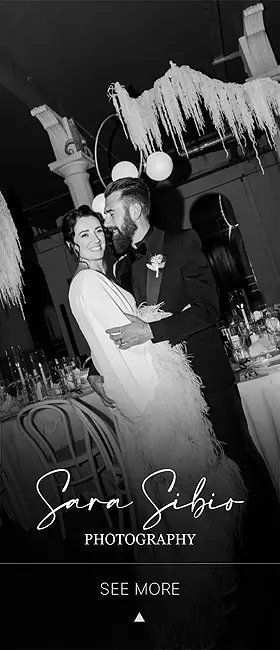We live in an age of infinite gift options, yet somehow the act of giving has become simultaneously easier and less meaningful. You can order anything online, have it wrapped and delivered within hours, and move on to the next item on your to-do list. But something essential has been lost in this convenience—the understanding that the most memorable gifts aren't just objects to be received, but experiences to be felt.
The gifts we remember years later aren’t usually the most expensive or elaborate but the ones that engage us fully—appealing to our senses and creating lasting impressions. The scent of flowers filling a room, the taste of something exquisite savored slowly, the visual beauty that stopped us mid-conversation, the texture we wanted to touch again and again. Such multisensory experiences create memories in ways single-dimensional gifts cannot.
Understanding this transforms how we give. It shifts focus from what we offer to how it will be experienced. From unwrapping to long after, the best gifts keep revealing themselves through layers of sensory engagement. They’re not just seen or used—they’re felt with our whole being, and that’s what makes them unforgettable.
.webp)
Why Our Senses Create Stronger Memories
There’s neuroscience behind why some gifts stay with us while others fade. Our brains encode sensory experiences more deeply than abstract ones. When multiple senses are engaged, memories form through several neural pathways, making them stronger and easier to recall.
Scent is especially powerful because it’s processed in the limbic system—the brain’s center for emotion and memory. A fragrance can instantly transport you to a specific moment, complete with its original feelings. Visual beauty triggers aesthetic and emotional responses, while taste connects to pleasure and memory, especially when tied to meaningful occasions.
This “rich encoding” explains why a fragrant bouquet creates a stronger, longer-lasting memory than a gift card of equal value. Multi-sensory gifts engage sight, scent, touch, and taste to embed themselves more deeply in our minds.
Beyond memory formation, multisensory gifts also communicate greater thoughtfulness. They show that the giver considered not just what the recipient might need or like, but how they would experience the gift—what they would see, smell, taste, or touch. This level of consideration is what transforms giving from transaction to genuine expression of care and understanding.
.webp)
The Visual and Aromatic Power of Flowers
Flowers represent perhaps the oldest form of multisensory gift-giving, refined over centuries into an art form that engages sight, scent, and even touch. Yet in our modern rush, we often treat them as mere decoration—something pretty to look at—missing the fuller experience they offer when given and received with intention.
The visual impact of flowers is immediate and undeniable. Colors affect mood and emotion in documented ways: bright yellows uplift spirits, soft pinks create calm, deep reds evoke passion and energy. The arrangement itself—how flowers are combined, their proportions, the composition—speaks to aesthetic sensibility and care. A thoughtfully designed arrangement shows that someone invested time not just in buying something, but in creating a visual experience specifically for the recipient.
But the often-overlooked dimension is scent. Fragrance adds emotional depth that visual beauty alone cannot achieve. The smell of fresh flowers triggers olfactory memories and creates new ones. Different blooms offer distinct aromatic profiles: roses carry romantic, heady sweetness; lilies offer exotic, intoxicating fragrance; peonies provide delicate, subtle scent; eucalyptus brings fresh, clean aromatics. When selecting flowers, considering fragrance alongside visual beauty elevates the gift from decoration to experience.
.webp)
The expertise required to create arrangements that maximize both visual and aromatic impact shouldn't be underestimated. Floristique demonstrates how true floral artistry considers every sensory dimension—not just which flowers look beautiful together, but how their fragrances will combine, how their textures will feel, how the arrangement will develop and change over days as blooms open and scents evolve. This understanding transforms floristry from decoration into the creation of living, changing sensory experiences.
The temporal nature of flowers also adds meaning to the sensory experience. Unlike permanent objects, flowers exist in a constant state of becoming and fading. Their beauty and fragrance are most intense for a limited time, which paradoxically makes the experience more precious. This impermanence encourages presence—you pay attention because you know it won't last. You notice the way light catches petals, how fragrance fills the room differently at various times of day, how buds gradually open into full blooms, and how each stage carries its own quiet poetry. This engagement with change and impermanence is itself a gift, reminding us to be present with beauty while it exists and to appreciate the fleeting moments that give life its rhythm.
There's also the often-overlooked tactile dimension of flowers. The velvet softness of rose petals, the waxy smoothness of lilies, the delicate tissue-paper texture of poppies—these textures invite gentle interaction, adding another layer to the experience. High-quality arrangements consider this too, selecting blooms not just for how they look or smell, but for their varied textures that create tactile interest and subtle contrasts, transforming an arrangement into something you instinctively want to touch as much as admire.
.webp)
The Convenience That Preserves Quality
In discussing multisensory gifts, we might romanticize the past—imagining a time when people had leisure to personally select and deliver elaborate gifts. But modern life's pace doesn't diminish the importance of thoughtful giving; it just requires different approaches to maintaining quality and meaningfulness within practical constraints.
The challenge isn't choosing between convenience and quality—it's finding services that deliver both. The best gift solutions understand that speed shouldn't compromise the sensory experience. Fresh flowers must actually be fresh, arriving in peak condition with days of beauty ahead. Arrangements must be protected during transport so they arrive as intended. Delivery timing must be reliable so gestures land when they matter most.
This is where expertise in logistics becomes part of the art. Summers Winter Flower delivery Singapore represents the kind of service that understands multisensory gifting requires maintaining quality throughout the entire process—from selection and arrangement to careful transport and timely delivery. The convenience of ordering from anywhere shouldn't mean compromising on the visual beauty, aromatic intensity, or freshness that make flowers a powerful sensory gift.
.webp)
The reliability factor also matters more than we often acknowledge. When you're giving something perishable and time-sensitive like flowers, knowing they'll arrive fresh and beautiful isn't just convenient—it's essential to the entire gesture. A wilted bouquet that arrives late doesn't just fail practically; it undermines the emotional intention of the gift. The care taken in ensuring proper delivery becomes part of how the gift communicates thoughtfulness.
Modern services that successfully balance convenience with quality also understand customization within constraints. While you might not personally hand-select every stem, you can choose arrangements designed for specific occasions, preferences, or messages. The curation that happens before you even see options—selecting seasonal blooms, creating harmonious combinations, ensuring aromatic and visual balance—means that convenience doesn't equal genericity. The expertise is applied upfront so that quick selection still results in thoughtful, multisensory experiences.
Technology enables something previous generations couldn't easily achieve: consistent, reliable thoughtfulness across distance and time. You can ensure someone receives beautiful flowers on an important date even when you're traveling, working, or simply dealing with life's demands. This reliability isn't laziness—it's using available tools to maintain connection and show care even when circumstances make in-person gestures difficult.
.webp)
The Pleasure Principle: When Taste Joins Beauty
If flowers engage sight, scent, and touch, adding taste to the sensory mix creates even richer gift experiences. The combination of visual beauty with culinary pleasure addresses multiple dimensions of appreciation simultaneously, creating gifts that feel both indulgent and thoughtful. When a recipient can see, smell, touch, and taste what you’ve chosen for them, the gift becomes not just an object but a moment to savor.
Chocolate represents the quintessential taste-based gift that also engages other senses. High-quality chocolate isn't just about flavor—it's a complete sensory experience. The visual appeal of well-crafted chocolate, whether elegantly molded or artfully decorated, creates anticipation. The snap of dark chocolate breaking, the smooth melt on the tongue, the complex flavors that develop and change—these engage multiple senses and trigger pleasure responses that make the experience memorable, connecting emotion, memory, and indulgence in one cohesive gesture.
But there's something even more powerful than a one-time chocolate gift: the concept of recurring pleasure. This is where subscription models reveal their psychological sophistication. A chocolate subscription box transforms a single sensory experience into an ongoing gesture—a recurring reminder that someone is thinking of you, that they want to continue bringing you pleasure, that the relationship isn't marked by one-time transactions but sustained care.
.webp)
The subscription model addresses something profound about modern relationships: the challenge of consistent connection amid busy lives. Grand gestures are wonderful, but regular small gestures often communicate more meaningful commitment. Knowing that every month (or whatever interval) brings a new experience of quality chocolate creates anticipation, provides recurring pleasure, and maintains connection in a way that single gifts, however elaborate, cannot match.
There’s also discovery built into quality subscriptions. Rather than the same thing repeatedly, curated subscriptions introduce recipients to new flavors, makers, or styles they might not have encountered otherwise. This combination of consistency (the regular arrival) and novelty (new varieties to explore) keeps the experience engaging over time. Each delivery is both familiar—the pleasure of anticipation fulfilled—and fresh—the excitement of discovering something new.
The multisensory nature of chocolate also makes it particularly suitable for this kind of ongoing gift. Unlike many consumables that might feel mundane when received repeatedly, quality chocolate maintains its special-occasion feeling even when it arrives regularly. The ritual of opening the box, observing the visual presentation, selecting which piece to try first, savoring the complex flavors—this sequence of sensory experiences doesn't diminish with repetition; it becomes a cherished ritual.
Combining chocolate with other sensory experiences creates even richer gifts. Pairing a beautiful floral arrangement with artisan chocolates, for instance, creates a gift that engages nearly all senses: the visual beauty of flowers and chocolate presentation, the fragrance of blooms, the taste and texture of chocolate, even the sound of unwrapping and the rustle of packaging. These compound experiences create stronger memories and communicate deeper thoughtfulness than either element alone would achieve.
.webp)
Creating Lasting Impressions Through Layered Experiences
The art of multisensory gift-giving isn't just about combining different sensory elements randomly—it's about thoughtfully composing experiences where different senses complement and enhance each other. This requires understanding how sensory experiences interact and how to create harmonious rather than competing stimuli.
Consider the interplay between visual beauty and scent. Flowers that are visually stunning but scentless feel incomplete, like watching a movie on mute. Conversely, fragrant but visually ordinary arrangements miss an opportunity. The most powerful floral gifts combine both dimensions—colors and forms that delight the eye paired with fragrances that enhance the emotional impact. Soft pink roses look romantic and their sweet scent reinforces that romance. Vibrant mixed bouquets feel joyful and celebratory, especially when they include bright, uplifting scents.
Temperature and texture also play underappreciated roles in gift experiences. The cool smoothness of chocolate against your tongue, its transformation from solid to liquid as it melts—these tactile and thermal sensations are part of what makes chocolate pleasurable beyond just taste. Fresh flowers, when touched, offer varied textures from petal to petal that invite gentle exploration. These physical dimensions of gifts create intimacy through direct sensory engagement that mere observation cannot achieve.
.webp)
Timing adds another layer to multisensory gifting. Flowers change throughout their lifespan—buds open, fragrances intensify and then soften, colors shift. This temporal dimension means the gift continues revealing new aspects over days, maintaining engagement and extending the experience. Similarly, curated chocolate selections encourage savoring over time rather than immediate consumption, turning a single gift into a series of small pleasures spread across days or weeks.
The context in which gifts are experienced also matters. A beautiful bouquet in a dark, unventilated space loses much of its impact. Chocolate consumed while rushing between tasks doesn't register the way it does when savored with attention. The best gifts implicitly invite proper context—they make you want to slow down, pay attention, engage fully with the experience rather than treating it as just another item to process and move past.
.webp)
The Lost Art Rediscovered
What’s been lost isn’t the act of giving gifts but the understanding of what makes them meaningful. Convenience has turned gifting into a task rather than an opportunity to create memories. We optimize for speed and ease while neglecting whether what we send feels special, thoughtful, and memorable.
Reclaiming the art of multisensory gifting doesn’t mean rejecting modern convenience. It means being intentional—thinking about how a gift will be seen, smelled, tasted, touched, and felt. Gifts that invite engagement create stronger memories than passive items.
This might mean flowers instead of gift cards, subscription boxes that deliver ongoing delight, or combining beauty, flavor, and fragrance to create richer experiences.
It also means valuing expertise. Florists who know which blooms harmonize or chocolate curators who understand flavor profiles help ensure even quick, convenient gifts achieve the multisensory impact that makes them meaningful.
The ultimate measure of a gift's success isn't its cost or even the recipient's immediate reaction—it's whether they remember it. Weeks, months, or years later, do they recall the experience? Does a certain scent or taste bring back the moment? Do they smile when they think about it? These lasting impressions come from gifts that engaged them fully, that created rich sensory experiences their brains encoded deeply. That's the art we're in danger of losing, and it's worth reclaiming.







.webp)
.webp)
.webp)
.webp)
.webp)
.webp)
.webp)
.webp)
.webp)
.webp)





